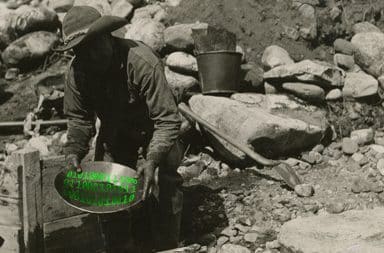As a professional teacher and amateur ghost hunter, I was finally able to wed my two passions this school year, as our school has gone “hybrid” and the majority of students are remote. You see, hunting for remote students is a lot like hunting for ghosts: Beings you’ve never seen or met float in and out of meetings and communicating with these beings can be mysterious and sometimes downright spooky.
Yet while my colleagues bemoaned the lack of participation from remote students in Google Meets—and sent furious emails home each day—I used my unique skill set in sensing nearly imperceptible beings to make contact with remote students. Here are five effective tools for reaching your remote students, straight from the ghost hunting world:
Television Set
It’s no secret that remote learning has been an attendance nightmare, with many students either struggling with their internet connection or oversleeping and then emailing that they’re struggling with their internet connection. Before you mark students absent for not showing up to your class, try this trick I learned from hunting poltergeist: Turn on a television set in a dark room, dial into a channel that only plays static, and place both your palms against the glass. You’ll faintly hear a chilling voice whisper only, “They’re here.” Although you might not have sensed the remote students any other way, you can now go ahead and mark all of them “here.”
Ouija Board
Formative assessment has been another struggle for teachers of remote students. While some teachers are using online applications like Pear Deck, Nearpod, and even PollEv to have quick check-ins with students, I’ve found that even these tools rarely engage remote students, who find it easy to ignore ungraded assignments.
Instead, I’ve been going old school: Ouija Board. Several of my colleagues and I will place our fingers on the wooden planchette and ask our remote students an exit-slip question. When I first tried this, I was sure that my colleague Greg was moving the device, but I became a believer when the responses became very specific and very mean. Only a teenager would repeatedly move the planchet back and forth from the letter “f” to the letter “u.”
Mirror
This is one of my favorite tools for “brain breaks,” when my lectures are getting a little too long. When I get a sense that students are starting to fall asleep, and I need to make sure that students are with me, I’ll go to the bathroom sink, splash a little cool water on my face, and when I look back into the mirror, I’ll have sworn I saw my remote students standing behind me for a second!
If you’re not comfortable summoning students into the bathroom, you can also use this trick in the faculty lounge. Simply lean deeply into the fridge, obscuring all of your surroundings and you’ll get an eerie feeling that your remote students are standing behind the open door. With that feeling that students are with you, you can confidently continue with your lecture.
Hot Dogs
This trick has been a staple of my ghost hunting days that—I’ll be honest—hasn’t translated that well to the classroom, but at this point, it’s too early to tell. You see, in the world of ghost hunting, we have classic “fat ghosts,” like Slimer from the Ghostbusters, and Fatso from Casper. These ghosts tend to love hot dogs. They will seek them out and shovel them into their mouths, their translucent bodies allowing the meat to thud onto the floor.
From my experience, kids also really like hot dogs for some reason, so just in case, I’ve been keeping an open package of Hebrew Nationals on my desk, next to the keyboard. Since only a few of my students are in-person, very few have a problem with the smell.
Greed
If all else fails, your remote students aren’t showing up, participating, or submitting any work—even after you’ve used my tried and true ghost hunting tricks—you’re going to need to pull out the big ghost guns. First, quit your job as a teacher and devote your life to a career in accounting, so much so that you develop a reputation for being miserly. Once you’ve worked your way to a top position, spend each Christmas as alone as you are currently in your classroom. Eventually, three of your remote students will visit you to teach you about the true spirit of Christmas, and you can sit them down for a serious talk about living up to their potential. At the very least, maybe you can get them to turn their cameras on.


